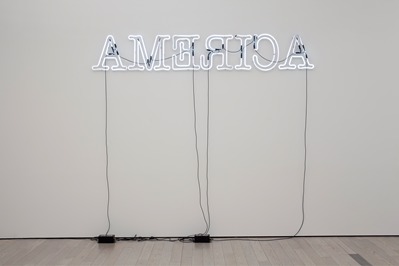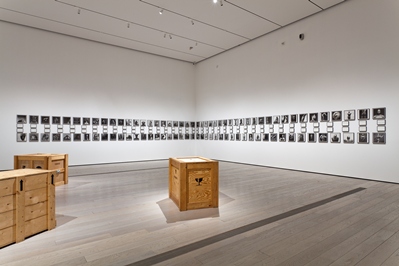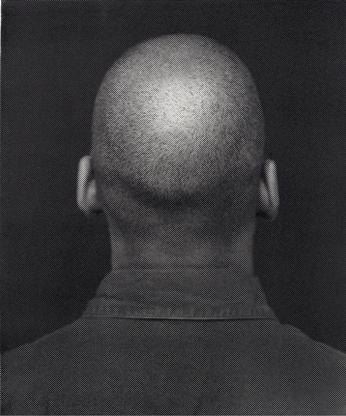Glenn Ligon: AMERICA opens to the public on Sunday—and is on view now for members. In anticipation of the opening, we asked the artist a few questions about his first major retrospective.

Glenn Ligon, Self-Portrait, 1996, collection of the artist, courtesy of the artist and Regen Projects, Los Angeles, © Glenn Ligon, photograph by Ronald Amstutz
The word “America” appears in some of your works (including in Rückenfigur, acquired by LACMA in 2010) as well as the title of the exhibition. Why did you choose that for the title of your retrospective?
The word appears in many of the texts I have used in paintings and neons, and American history and culture has long been the subject of the work. Using the word “America” as the title of the exhibition was a good way to sum up that ongoing interest.

Glenn Ligon, Rückenfigur, 2009, Los Angeles County Museum of Art, gift of the 2010 Collectors Committee, © Glenn Ligon, photo © Museum Associates/LACMA
Early in your career, paint on canvas was your medium. What inspired you to eventually move into other mediums, including photography, drawings, sculpture, and neon?
I chose to work in other mediums because they allowed me to more succinctly address the issues I was grappling with in the work. For instance, the piece Notes on the Margin of the Black Book started as a drawing project but I quickly realized that if I was going to comment on Robert Mapplethorpe’s photographs it made more sense to use the actual images than to recreate them.

Glenn Ligon, Notes on the Margin of the Black Book, 1991-1993, Solomon R. Guggenheim Museum, New York; gift of the Bohen Foundation, © Glenn Ligon
Notes on the Margin of the Black Book is a reflection on the cultural debates surrounding Robert Mapplethorpe at the time. What was it about Mapplethorpe, or the greater debate, that compelled you to do that piece?
The debates around those photos were a snapshot of larger debates going on in the culture about representation, sexuality, censorship, the role of art in the culture, etc. The piece was an attempt to broaden the range of reference in my work.
How does it feel, thirty years into your career, to see so much of your work presented in whole? To see your works from the 1980s juxtaposed against more recent works?
Retrospectives are a good way to see what you have done and what you still have to do. It is a fantastic opportunity to see things I have not seen in years.
Scott Tennent



